You have your eCommerce store ready. You have listed thousands of products in your store. Your well meaning friends are telling you "your website looks great" … but… the site’s traffic hasn’t exploded like all the gurus said it would.
Where did you go wrong? What did you miss? Why aren’t the “Google gods” showering you with new customers?
More than likely, it’s a few simple product page SEO mistakes you have overlooked. And it’s not your fault… the first time we read Google’s webmaster guidelines, we felt like giving up too.
If you’re anything like our most successful clients… you’ve got better things to do than trying to wrap your head around the 200+ ranking factors Google’s Algorithm is known for.
Well, here’s the good news. There is an easier way. A faster way.
After having worked on many different eCommerce SEO campaigns, we’ve discovered there are really only a few key factors that make product pages rank. If you keep reading… not only will you discover the 10 most common mistakes we’ve come across, but you’ll discover tips to fix them in case you’ve made one of them on your site.
PLUS, keep reading because, at the end of the guide, we’ll also reveal 8 bonus tips to make your product pages rank faster AND convert higher.
So keep scrolling to dive right in.
10 Common eCommerce Page SEO Mistakes
Neglecting Meta Data
Mistake
Not considering your metadata can hamper your SEO efforts even if you are doing everything right.
You should include the following in your metadata:
- Name and model of the product
- Brand name
- Unique features of the product
Tip
When a searcher queries for a product, the few things they would scan are the meta titles and descriptions.
Spend some time crafting unique title tags, headings, image alt texts and meta descriptions for your product pages.
Generic Product Descriptions
Mistake
One of the most common mistakes is copying product descriptions from the manufacturer’s website or using unimaginative copy.
Our advice - write compelling and engaging product descriptions for all your product pages.
Tip
Build a story around the best features of the product. Treat it like a sales pitch and think about the reasons why your customer should buy a product from your website.
It is worth spending time writing informative descriptions. And it can really help your pages get discovered on search engines.
Check out a great example from an Outdoor Adventure eCommerce website below (source - BCF)
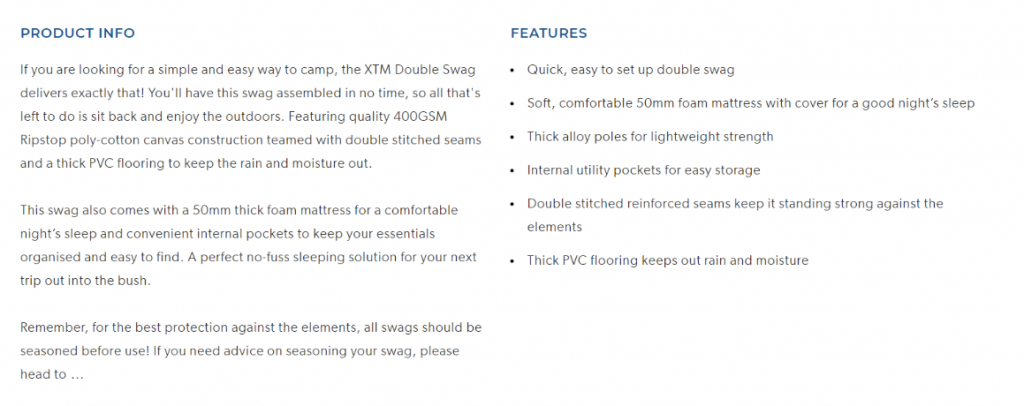
Below is a comparison of Swags listed on the BCF website - Darche Dusk to Dawn Swag and the Darche Dirty Dee Swag. They both have unique product info, features and tech specs.

Lack Of Keyword Research
Mistake
Creating content no one is searching for will result in zero traffic.
According to a study conducted by Ahrefs, 90.63% of pages get no traffic from Google.
It doesn’t have to be this way if you do your keyword research correctly.
Tip
Product pages need to include keywords with high search volume. When you create product pages, focus on the brand name and product attributes.
Conducting thorough keyword research can help you find search terms with high volume and traffic potential.
For example - if you want to rank for “Single Origin Coffee,” your product page should include words related to:
- Origin of the coffee beans - producer, crop or region
- Tasting notes
- Processing
- Altitude
- Roast freshness and profile
- Varietals
You can use SEO tools like SEMrush and Ahrefs, or free tools like Google Keyword Planner, Ubersuggest or Keywords Everywhere. Make sure you check the search volume, keyword difficulty, and search intent of keywords.
Use keywords with a transactional intent on your product pages. It will allow your pages to be visible when the customer is in buying mode. Include the brand, model number, high-quality images and videos for better results.
BONUS TIP: If you really want to get advanced, build out a category page around “Single Origin Coffee” list all the different single origin coffee products you have on that page and help your traffic make the best buying choice for them using the content on the category page.
EXTRA BONUS TIPS: Make all your individual product pages link up to your category page to rank for the broad single origin coffee keyword real fast. Point backlinks at each of the product pages and let that beautiful ranking juice flow right through your stack.
Weak and Unappealing Calls to Action
Mistake
A call to action invites a user to take a specific action. Whether it is to subscribe to your newsletter, buy a product or submit a form.
Tip
- Determine the goal you are trying to achieve with the CTA
- Use strong verbs and benefit-oriented words that speak to the reader
Write like you are speaking to your reader. If you just use generic CTAs like buy now or shop now, they don’t sound enticing. An informal tone makes a big difference.
A call-to-action that conveys value rather than action can keep the user engaged. And they are more likely to convert.
Below are a few examples from Marketing Examples that we think might help.
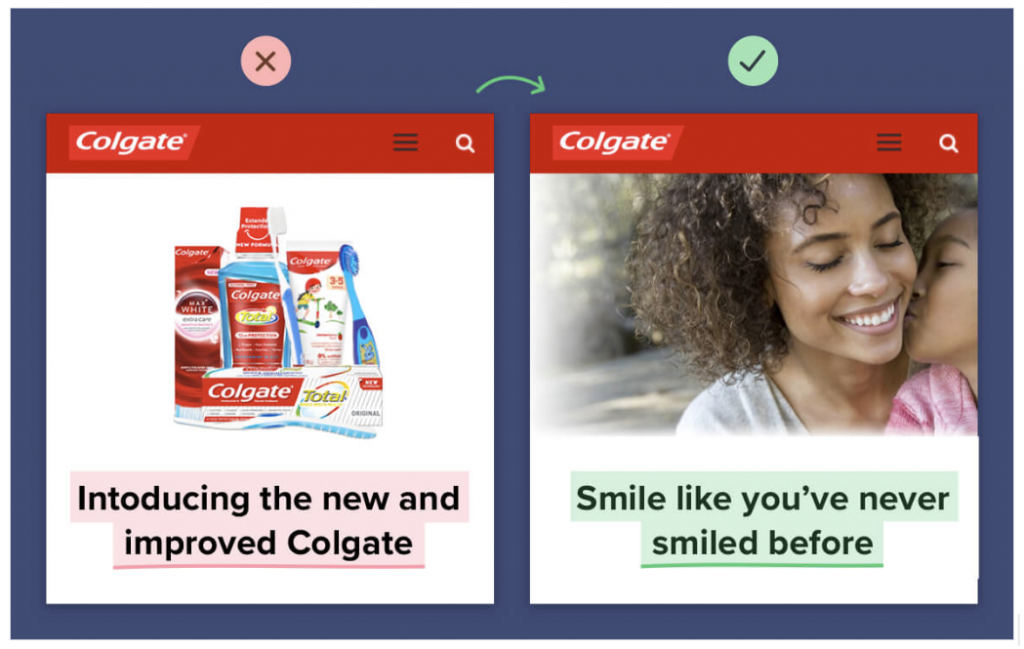
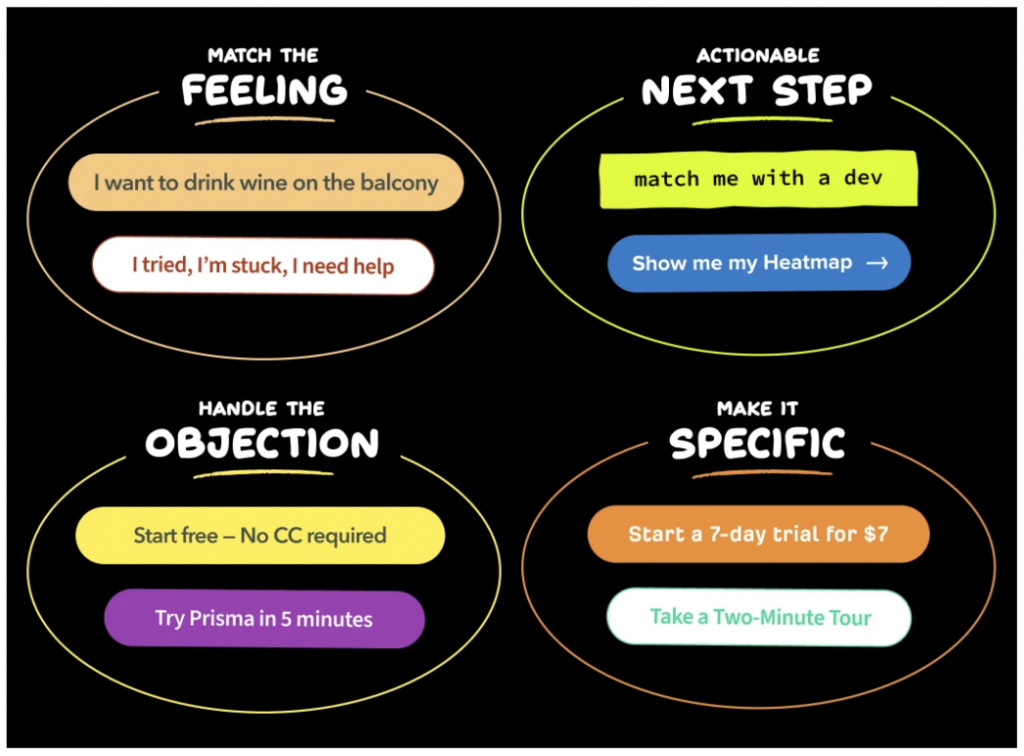
Mobile Performance
Mistake
Another common SEO mistake is not optimising your online store for mobile users.
Your consumers are using mobile for shopping.
And if your website is not blazing fast on mobiles, you are likely to lose a major chunk of your customers.
Tip
- Use responsive design
- Make navigation accessible and user-friendly
- Ensure all the elements - links, pages, and images load properly, without errors
- Optimise images and videos
- Eliminate annoying pop-ups and ads
- Test the website speed regularly
- Create a delightful and intuitive user experience
For example - PageSpeed Insights shows us this SingleO page is fast and provides a good user experience whether on mobile or computer. User experience is a critical factor in conversions and engagement per session and low bounce rate.
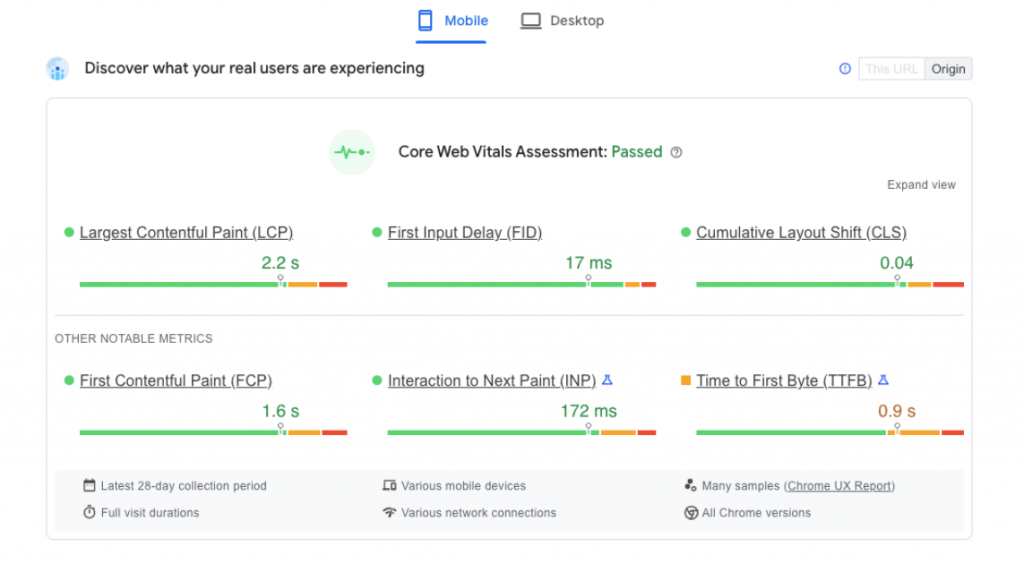
Thin Content or Duplicate Content on Product Pages
Mistake
If your on-page content has no value to the user or if you are using the same content on all your product pages, copying the same meta tags over, is NOT the best practice. Using automatically generated content or using doorway pages will impact your CTR and you may get penalised by Google.
Tip
Create unique content, and metadata for ALL product pages.
Avoid using stock photos on product pages. Use high-quality images wherever possible.
Use our full On-page SEO Guide For eCommerce Brands to properly optimise your pages.
Not Implementing Structured Data
Mistake
Structured Data allows search engines to understand product information easier, providing better click through rates and user intent.
Tip
We prefer JSON-D format which is preferred by most search engines. Match the structured data exactly with the visible product information.
For example - The example below indicates the pages have Review and Product Markup Rich Snippets to show a star rating and product information.
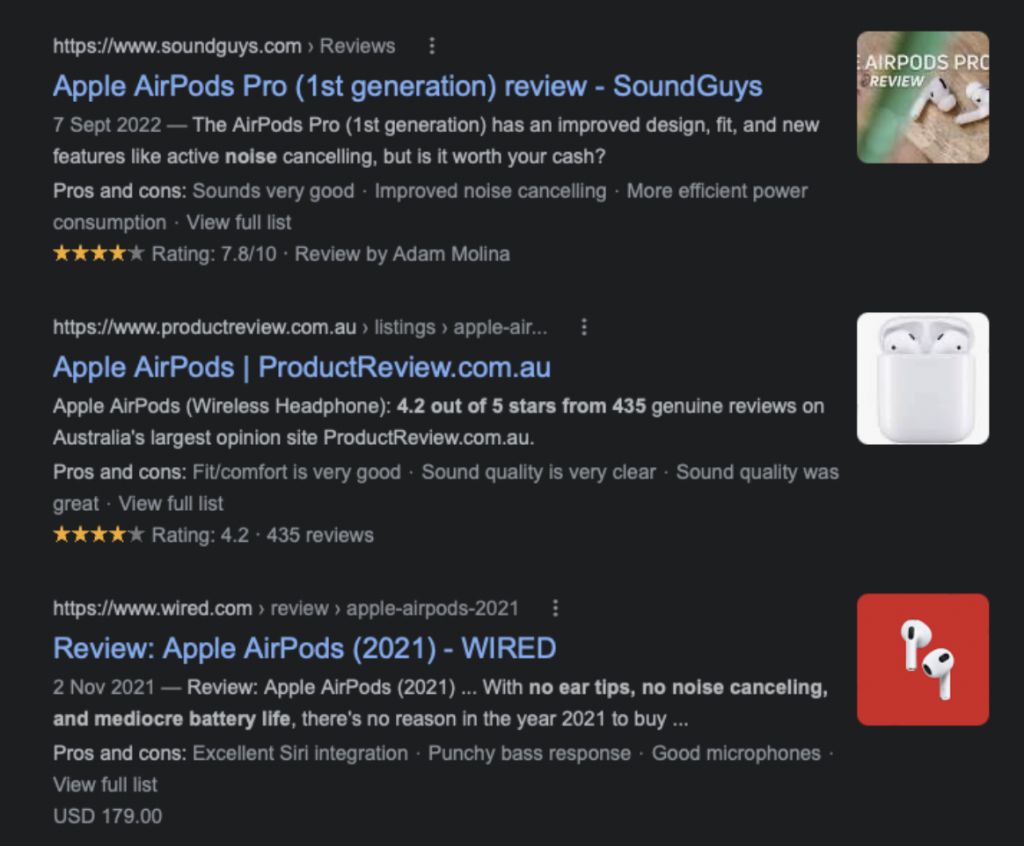
Lack of FAQ sections
Mistake
Customers are likely to abandon their shopping cart if they are unsure of the look and feel of the product. If they have an objection and don’t get it answered, they are likely to jump to your competitor
The lack of FAQ sections on product pages creates uncertainty. Will the shirt fit? Will I get a free refund? Do I have a 30-day return guarantee?
Tip
Answer any objections your customers might have through your content. Create a FAQ section which answers all the doubts they may have.
- Identify the most common questions that customers generally have for your products
- Write clear answers to the questions
- Create your FAQ page
- Make it visible
Take a look at this product page for Apple Airpods on Amazon. It allows the customers to find out the answer to any doubts they may have. If I want my AirPods to be engraved, I can easily figure out it won’t be engraved and I should purchase it directly from Apple.
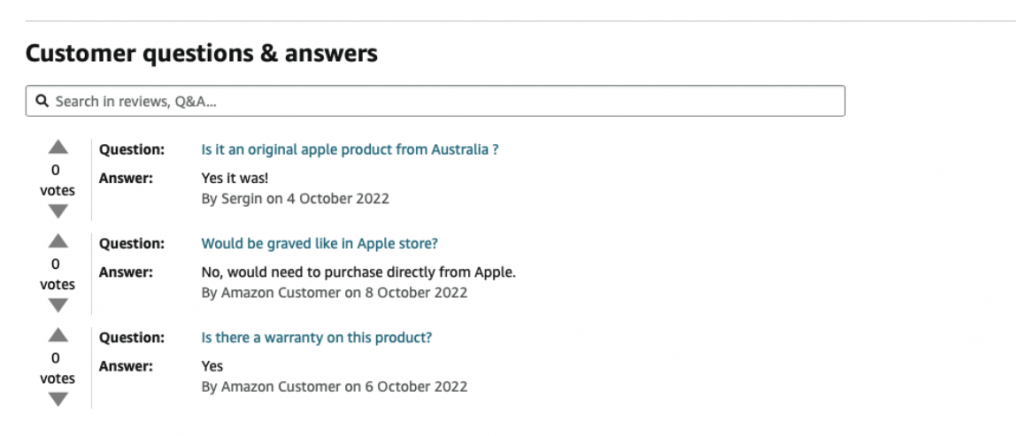
Lack of customer reviews
Mistake
Customer reviews are critical for eCommerce success and can provide valuable insight to continually improve your product offerings. Having a reviews section is a non negotiable.
Tip
Encourage detailed, constructive feedback from loyal customers. Offer incentives for leaving comprehensive reviews, and respond to both positive and negative reviews professionally.
For example - this product page from Shein has a customer review section and answers the main questions a shopper could have - was it small, true to size or large?
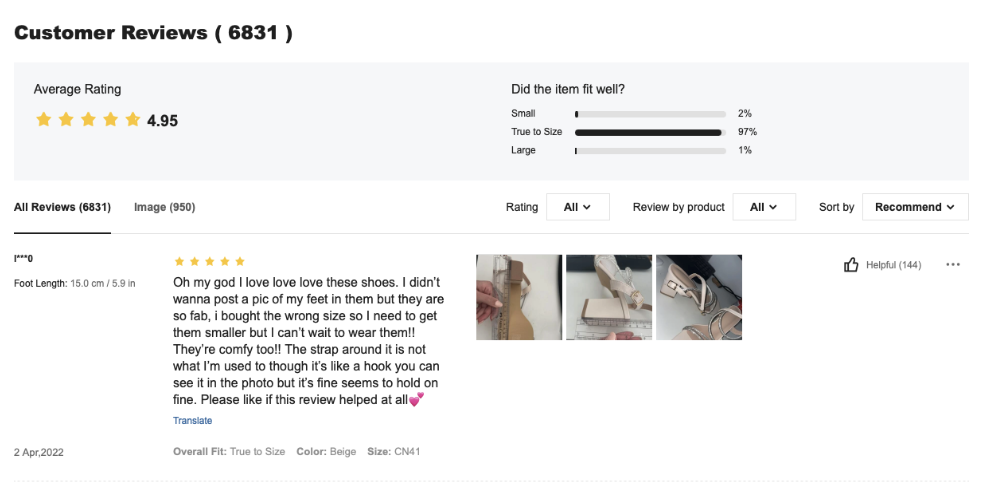
If you are struggling with getting reviews, you need to ask your customers for feedback. Drop reminders via pop-ups (not too invasive) and emails.
Check out this example below for capturing those reviews.

No AI/AR Features
Mistake
Not using AI( Artificial Intelligence) and AR (Augmented Reality) in your website.
Let’s face it - there are millions of eCommerce stores. How do you differentiate your offering if your website looks the same as a million other websites?
Tip
Ensure mobile responsiveness of whatever you install, and optimise 3D model file sizes - you don't want your innovation to slow down the site.
Implement fallback experiences for devices without AR, and prioritise user privacy and data protection.
Artificial intelligence can predict shopping patterns and recommend products to customers based on their buying habits, searched products and browsing activities, while augmented reality superimposes a computer-generated image on a user’s view.
Pokémon Go is one such example of clever AR technology. It lets users catch Pokemon near their vicinity using their mobile phones. The app has had great success and captured the imagination of users.
Customers are more likely to buy a product they can try before they buy it. It removes the element of uncertainty and creates a delightful sensory experience.
“According to a survey conducted by NielsenIQ, 56% of shoppers said that AR gives them more confidence about the quality of a product, and 61% said they prefer to shop with retailers that offer AR experiences.”
AI and AR are great ways to differentiate your brand from competitors. If I can try out clothes online, and visualise how a table would look in my living room, why would I not go for these brands?
For example - Ikea place lets you virtually place objects in your room. The video explains it much better!
Amazon leverages AI to:
- Deliver product recommendations based on customer’s preferences
- Enable voice-based shopping via Alexa
- Chatbots to interact with customers and handle any queries
- Forecast the demand for products
Elements Of A High-Performing eCommerce Website
1. Think like your audience
Understand your audience and create product pages that meet their intent.
2. Keyword Strategy
Use a mix of keywords (head and long-tail keywords) to appeal to the phases of the buyer’s journey.
3. Engaging Content
Write a clever and compelling copy to communicate with your audience.
High-quality images and videos.
Powerful content and graphics can resonate with the user and help them become your loyal fans.
4. Optimise Your Website
- Optimise the usability and performance of your website for all devices - desktop, mobile and tablet.
- Conduct regular site audits to find duplicate content, broken links, orphan pages and other issues.
- Use unique content, meta title, meta descriptions and image alt text
Check out our eCommerce Platform Guides for more information on best optimisation practices.
The Ultimate WooCommerce SEO Guide
The Ultimate Shopify SEO Guide
4. Leverage Social Media
Don’t underestimate the power of social media.
A customer will be unimpressed with the lack of your social media presence and might not consider your eCommerce store.
Stay active on different social media channels. The better your customer engagement is, the better your conversions will be.
5. Structured Data
Implement structured data for your product pages. It will lead to more impressions, and clicks, increase CTR and boost sales.
Make sure the structured data is implemented correctly as incorrect data will violate Google’s guidelines, and it will hurt your site ranking.
6. Customer Testimonials & FAQs
Share genuine customer reviews, user-generated content and create an FAQ section to put your shoppers at ease.
This will help your brand create loyal customers and sell more products.
7. High-Quality Images & Videos
Use high-quality images - stay away from stock photos or low-quality images for your products.
Customers cannot touch and see your product. And your website is the only way they can see the product.
If you can include AI/AR features, that’s a cherry on top.
8. Test Landing Pages
Our emotions and feelings are biased and can lead us astray. Data is a powerful way to test our hypothesis and take relevant action.
Google Optimise is a free tool that can help you conduct testing on your pages and customise your experience to suit your audience.
A few tweaks in the website copy and CTA can boost your sales. The best way to do it is by conducting regular testing to see what performs best and keep it there.
Ready to Take Your eCommerce Site to the Next Level?
Your eCommerce SEO strategy can make or break your brand.
Implement those strategies to grow your customer base and create an amazing user experience.
Did you follow any strategies above?
Have you made any of the SEO mistakes listed above?
DISCOVER ADDITIONAL ECOMMERCE SEO TRAINING:
eCommerce Link Building Strategies
How To Create Blog Content That Builds An eCommerce Stores Brand (and ranks for SEO)
